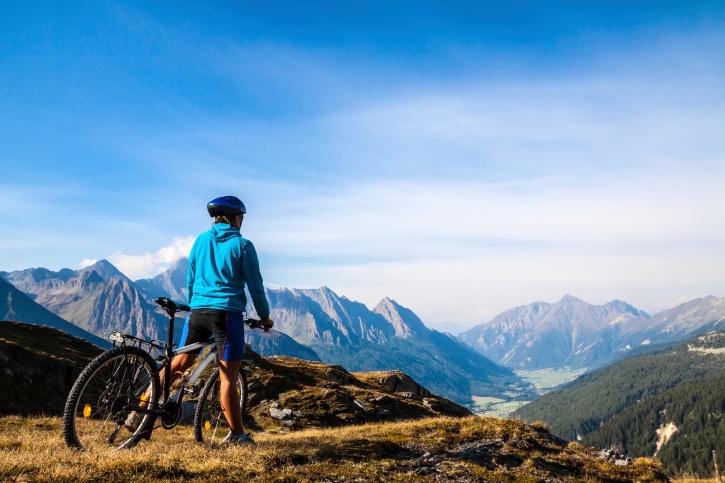
High altitude mountain biking heats up every summer as a common activity for adventure seekers. From the Colorado Trail Race to the Arizona Trail Race, many races start at 10,000 feet and up!
Biking up extremely high mountain altitudes requires special physical and mental preparations before, during, and after the race. Endurance is the key to success! For those who don’t live in high altitudes, acclimation takes time and varies between individuals.
Follow these seven simple tips to ensure an exhilarating and safe mountain biking experience:
- Give yourself time to acclimate to the altitude.
Altitude sickness results from a significant rise in altitude within an insufficient amount of time. As the air pressure drops, your body has less oxygen to fuel your muscle movement. The earlier you arrive to higher altitudes before a race, the better your body can adapt to the increase in elevation. This results in improved mountain biking performance, which could mean the difference between winning and losing your next race. - Be in tune with your body’s needs
Pay attention to your body’s reaction to the increase in altitudes. If you experience headaches, dizziness, nausea, fatigue, or congested sinuses, keep in mind that these are common symptoms of altitude sickness. Every individual is affected differently from mountain biking conditions. If you experience a higher heart rate or unusual breathlessness, ask for help! - Ascend at a gradual pace.
This is the smartest and safest way to avoid altitude sickness. Give your body the right amount of time to gradually adjust to the higher altitudes and reduced oxygen levels. Even while resting, your body is still adjusting to the effects of higher elevation. Overexerting yourself is dangerous. Remember, slow and steady wins the race! - Eat and drink well.
Make sure that you eat a healthy, natural diet with fruits, vegetables, antioxidants, and iron. Iron deficiency prevents red blood cell production. High altitude exposure decreases antioxidant concentrations in your bloodstream. Antioxidants strengthen your immune system, and without them, it is difficult to recover between exercise sessions. Drinking lots of fluids maintains your body’s natural hydration balance. Even if you don’t feel thirsty, your body probably is! When your body is exposed to high altitudes, it becomes dehydrated and results in muscle tissue being burned for energy. - Consult with a doctor/physician.
Before you leave for your mountain biking adventure, ask your doctor if your body is suitable for the experience. Do you have health conditions that make mountain biking risky? Are you taking any medications that could affect your breathing rate (sleep medications, pain killers, etc.)? These questions should be answered to determine if your body can handle the physiological effects of altitude. - Travel with a buddy.
Never mountain bike alone. You always want someone there to watch your back in the event of a worst-case scenario. Accidents happen, so it is smart and safe to travel with at least one other person. - Prepare a back-up kit.
Being prepared for worse-case scenarios is a necessity. Carry a repair kit with a pump and a first aid kit. Bring extra water bottles, clothing and snacks. It is better to be safe than sorry!
High Altitude Training
Train your body to breathe the right way. Incorporate PowerLung into your cardio and aerobic training programs for significant improvements in respiratory strength. Expand your lung capacity, increase your oxygen intake, and perform with no-quit endurance at high altitudes. Make your next mountain biking experience a breeze by strengthening your lung capacity and enabling your body to push itself harder. Follow our user-tips for more advice on how to improve your workout with PowerLung.
To learn more information about the benefits of PowerLung in high altitude mountain biking, click here and check out Clyde Soles' book "Climbing: Training for Peak Performance."
